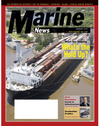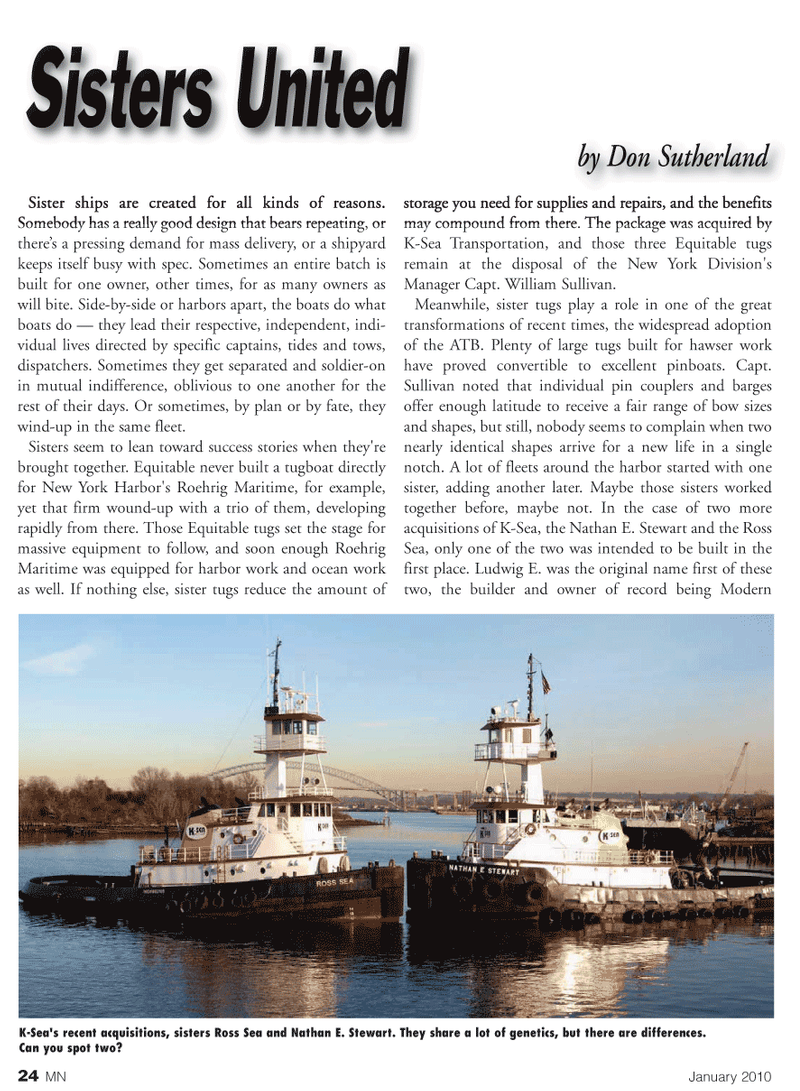
Page 24: of Marine News Magazine (January 2, 2010)
Read this page in Pdf, Flash or Html5 edition of January 2, 2010 Marine News Magazine
24 MN January 2010
Sister ships are created for all kinds of reasons.
Somebody has a really good design that bears repeating, or there’s a pressing demand for mass delivery, or a shipyard keeps itself busy with spec. Sometimes an entire batch is built for one owner, other times, for as many owners as will bite. Side-by-side or harbors apart, the boats do what boats do — they lead their respective, independent, indi- vidual lives directed by specific captains, tides and tows, dispatchers. Sometimes they get separated and soldier-on in mutual indifference, oblivious to one another for the rest of their days. Or sometimes, by plan or by fate, they wind-up in the same fleet.
Sisters seem to lean toward success stories when they're brought together. Equitable never built a tugboat directly for New York Harbor's Roehrig Maritime, for example, yet that firm wound-up with a trio of them, developing rapidly from there. Those Equitable tugs set the stage for massive equipment to follow, and soon enough Roehrig
Maritime was equipped for harbor work and ocean work as well. If nothing else, sister tugs reduce the amount of storage you need for supplies and repairs, and the benefits may compound from there. The package was acquired by
K-Sea Transportation, and those three Equitable tugs remain at the disposal of the New York Division's
Manager Capt. William Sullivan.
Meanwhile, sister tugs play a role in one of the great transformations of recent times, the widespread adoption of the ATB. Plenty of large tugs built for hawser work have proved convertible to excellent pinboats. Capt.
Sullivan noted that individual pin couplers and barges offer enough latitude to receive a fair range of bow sizes and shapes, but still, nobody seems to complain when two nearly identical shapes arrive for a new life in a single notch. A lot of fleets around the harbor started with one sister, adding another later. Maybe those sisters worked together before, maybe not. In the case of two more acquisitions of K-Sea, the Nathan E. Stewart and the Ross
Sea, only one of the two was intended to be built in the first place. Ludwig E. was the original name first of these two, the builder and owner of record being Modern
Sisters United by Don Sutherland
K-Sea's recent acquisitions, sisters Ross Sea and Nathan E. Stewart. They share a lot of genetics, but there are differences.
Can you spot two?

 23
23

 25
25
